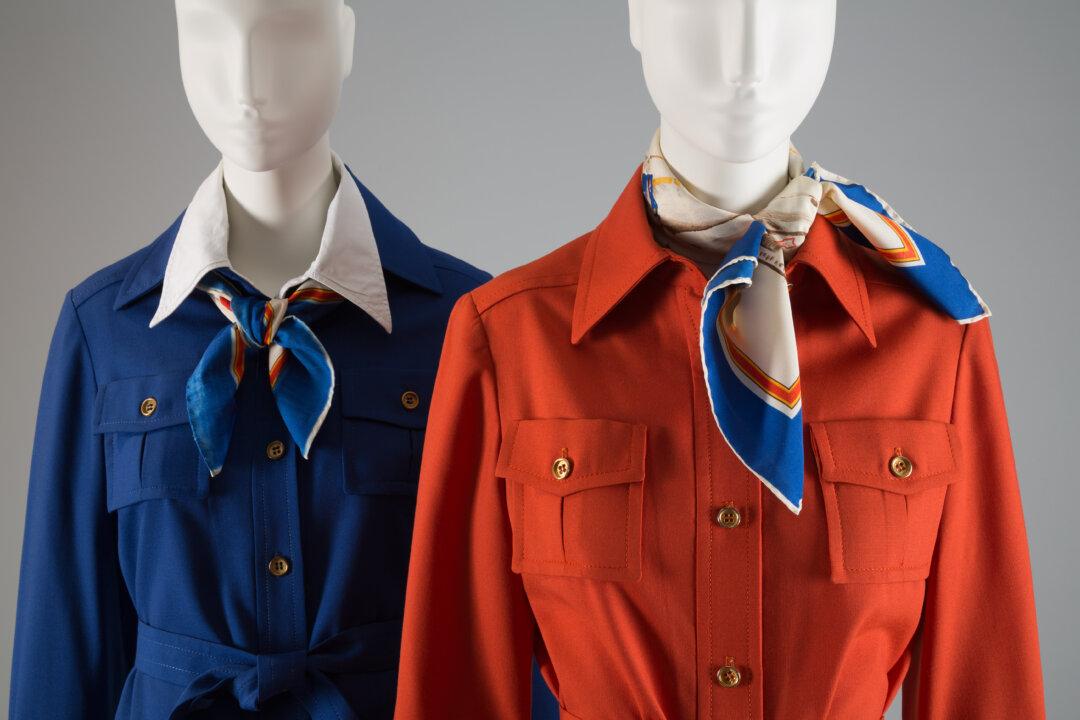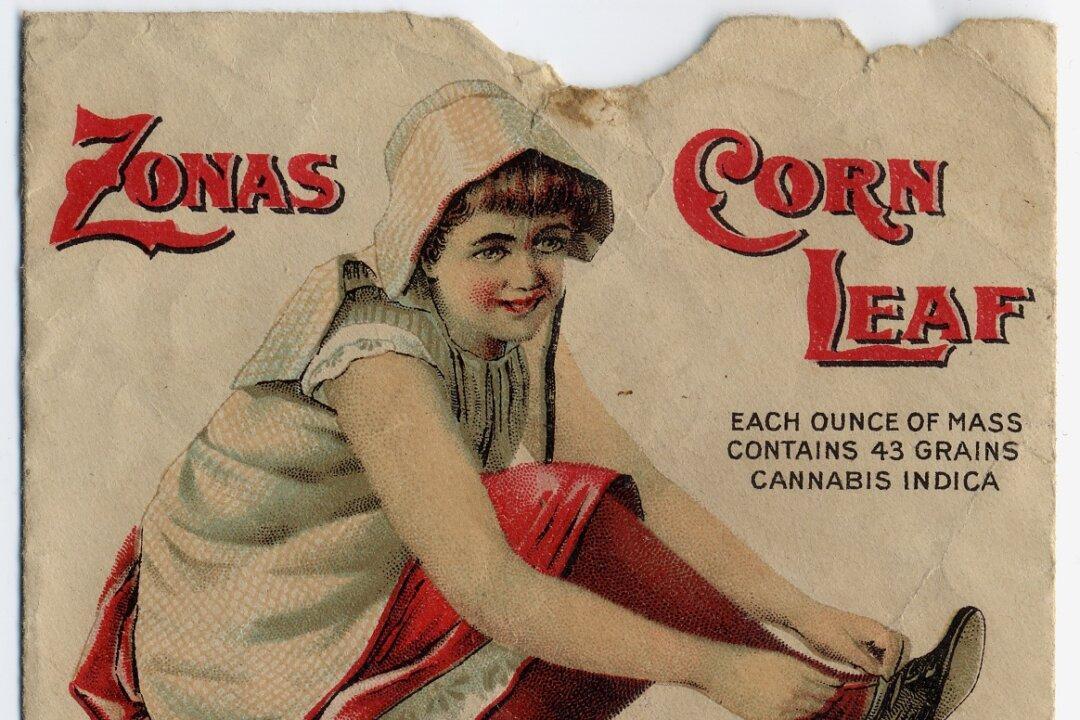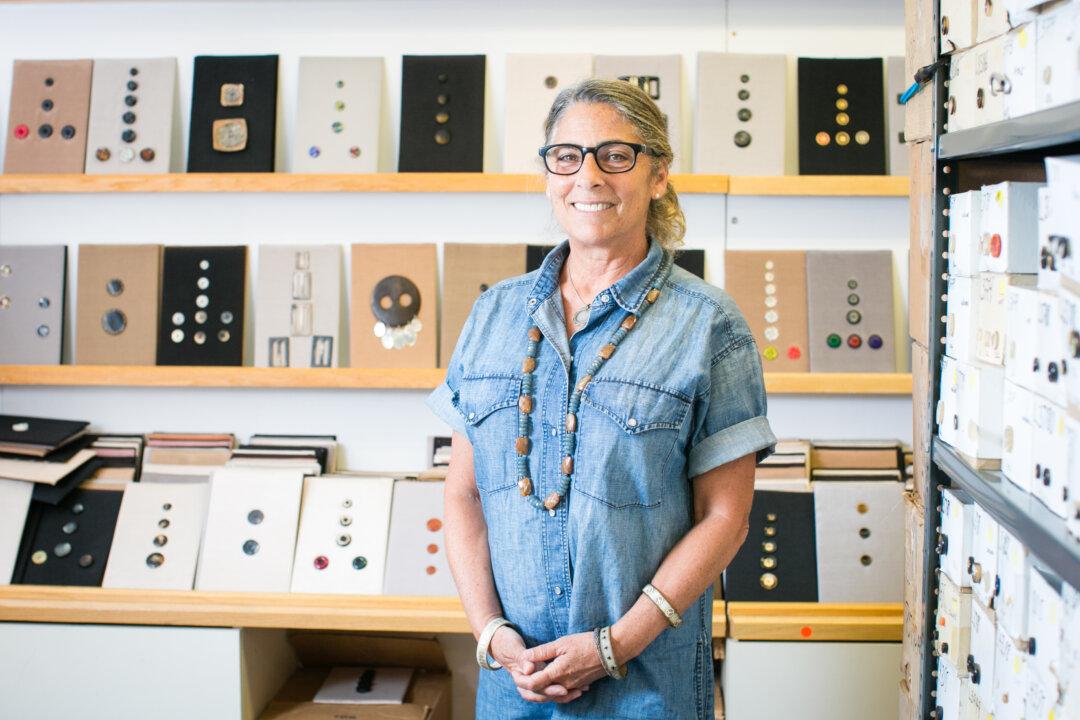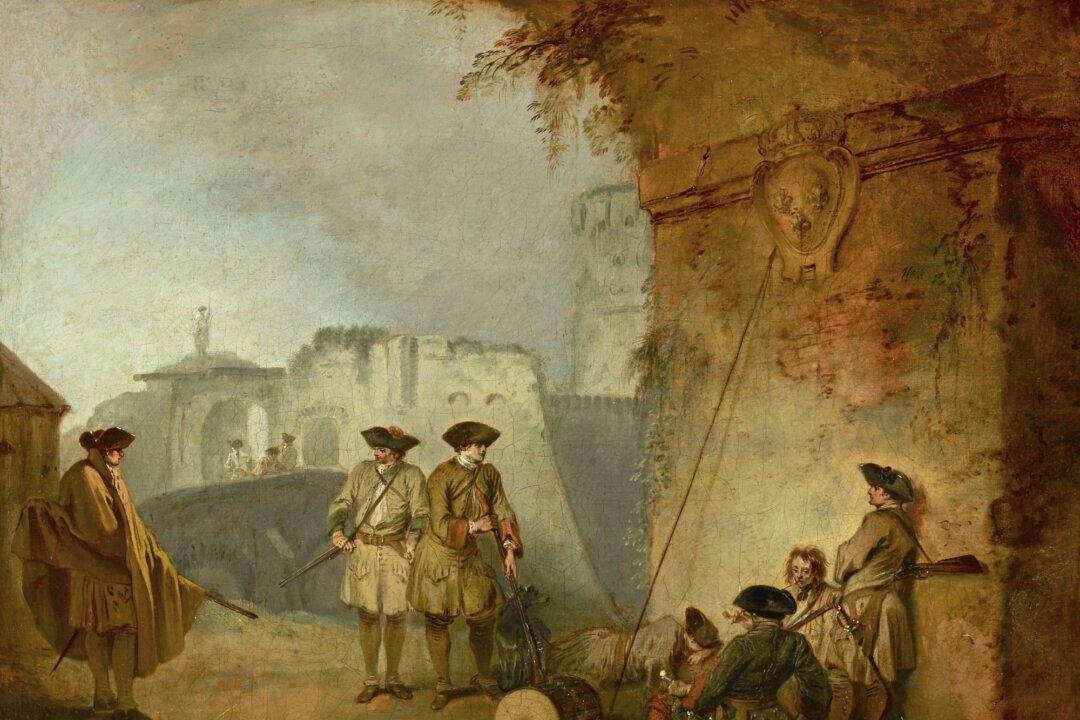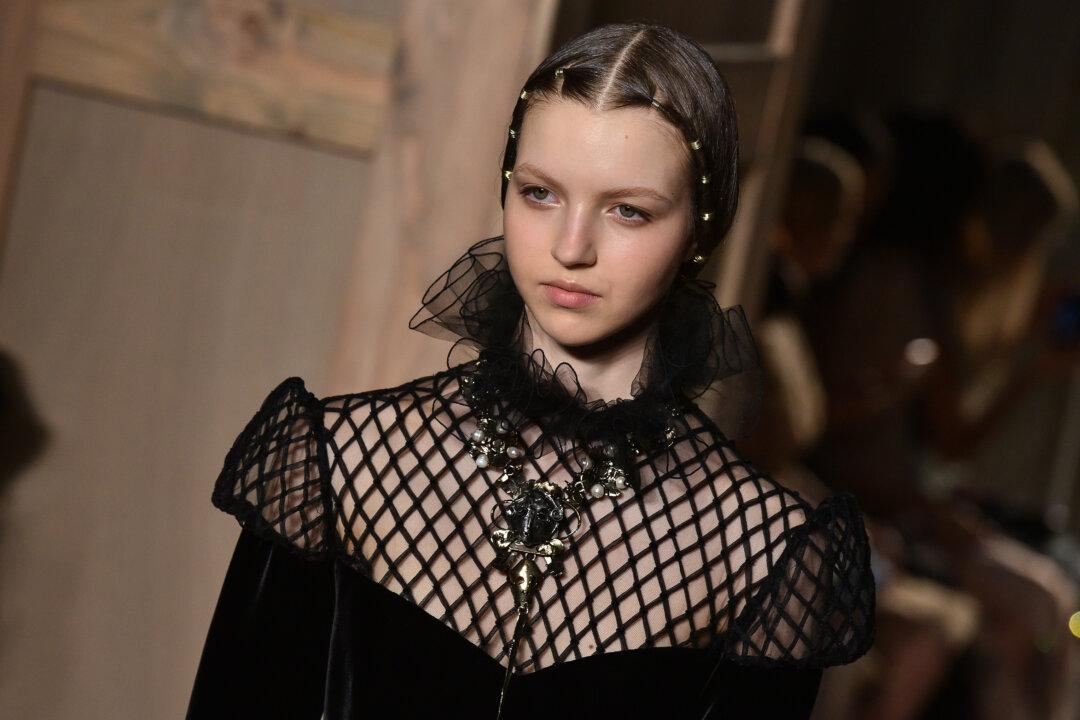NEW YORK—The uniform—u ni form n., one form for all members of a group—has been one of the most visually striking ways through which nations across the globe have been able to show their individual togetherness. From the battlefield to business corporations, the uniform has been playing the same role throughout millennia.
Uniformity, the new exhibition at The Museum at Fashion Institute of Technology (FIT), explores the aesthetics and social attitudes toward the uniform, as well as the ways in which fashion designers have used the uniform as inspiration.
According to exhibition organizer Emma McClendon, Americans have had a love-hate relationship with uniforms, particularly since the Vietnam War.
The Military
The exhibition features a number of U.S. Army and Navy uniforms from the 1940s onward, with interesting text notes.

